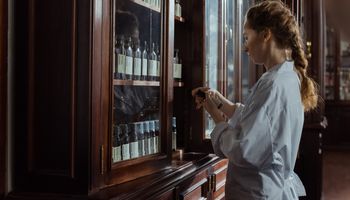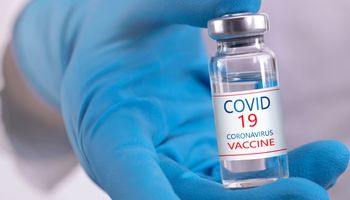Alopecia areata:
Circular hair loss, technically known as alopecia areata, is one of the autoimmune diseases and can manifest as rapid, non-scarring, patchy hair loss on the scalp, eyebrows and eyelashes. This can be manifested by bald patches to complete hair loss and can register not only physical but also negative psychosocial effects. Currently, there are treatment options that are intended to stimulate hair growth either locally (i.e., locally) or systemically (i.e., affecting the entire body). These include:
- Skin irritants against circular hair loss (e.g.: anthralin, chrysarobin, capsaicin and pepper tincture)
- Solutions with the active ingredient minoxidil
- Creams or solutions with glucocorticoids "cortisone".
- Topical immunotherapy
- PUVA (i.e. psoralen plus UV-A, photochemical treatment method).
However, none of these treatments is a causative therapeutic method. In this context, it has been known among dermatologists for several years that a course of so-called Janus kinase inhibitors(JAK for short) could have a positive effect on the disease, which is currently being conducted "off-label". The drug used in the study, baricitinib, is an oral, selective, reversible inhibitor of JAK and can interrupt signaling (i.e., signaling of certain cytokines involved in autoimmune diseases in the lymphocytes), which is significant for the formation of alopecia areata. As a result, immune cells are not activated and the inflammatory response is prevented.
BRAVE studies:
Published in 2022, in the New England Journal of Medicine, the placebo-controlled, randomized, two-part Phase 3 study was conducted in two trials ("BRAVE-AA1" and "BRAVE-AA2") with a total of 1200 study participants. This consisted of adults with severe alopecia areata resulting in hair loss of at least half of the scalp. The severity of the disease was evaluated with a "SALT" (i.e. Severity of Alopecia Tool) score of 0-100, where 0 means no hair loss and 100 means total scalp hair loss. Patients were divided into groups in a 3:2:2 ratio. Either a 4 mg dose of baricitinib, a 2 mg dose, or placebo was administered once daily. The primary end goal was a SALT score of 20 or less at the end of the intervention phase of 36 weeks.
Renewed hair growth:
More than half of the study participants showed a SALT score of 95-100, with about 30% having alopecia universalis, or loss of all body hair. Only 10% of the participants had not attempted any previous therapy. A total of 654 patients participated in the first part, the BRAVE-AA1 study, and 546 patients in the second part, the BRAVE-AA2 study. According to evaluations after 36 weeks, patients recorded a SALT score of 20 or less (i.e., at least 80% scalp hair coverage) as follows:
|
|
4 mg baricitinib | 2 mg baricitinib |
Placebo |
BRAVE-AA1 |
38,8 % | 22,8 % | 6,2 % |
BRAVE-AA2 |
35,9 % | 19,4 % | 3,3 % |
In the first part, the difference between the 4 mg and placebo group was 32.6% and between 2 mg and placebo was 16.6%. The same values for the second part of the study were: 32.6% difference between 4 mg and placebo and 16.1% between 2 mg and placebo.
One third of the patients who received the higher dose experienced renewed hair growth. In the BRAVE-AA2 study, 38.9% of patients on the higher dose experienced renewed hair growth of eyebrows, while 36.8% experienced renewed eyelash growth. Acne, elevated creatine kinase levels, and elevated HDL (about 40% of patients) and LDL cholesterol levels (about 25% of patients) were recorded more frequently in the baricitinib groups than in the placebo group. One patient discontinued the study early because of severe infections.
Conclusion:
The oral drug baricitinib used in the two phase 3 trials was significantly superior to the placebo used in terms of renewed hair growth at 36 weeks, according to study results. According to researchers, despite positive results, longer studies are needed to evaluate the efficacy and safety of the drug baricitinib in circular hair loss.






